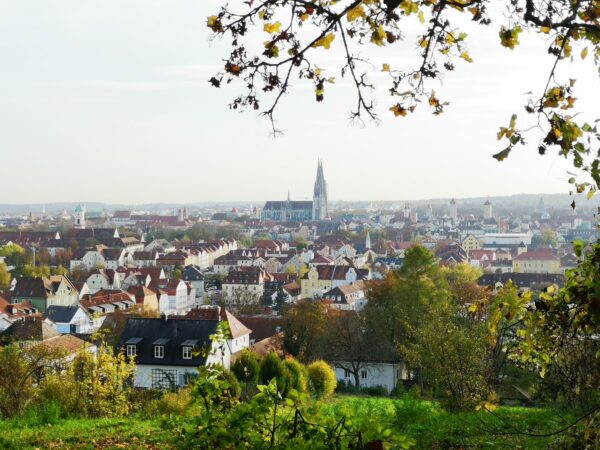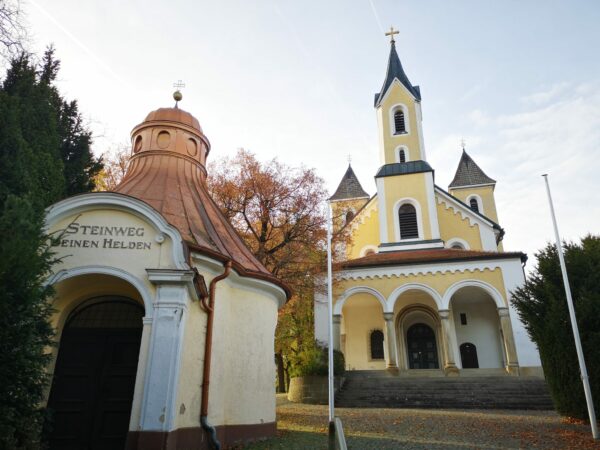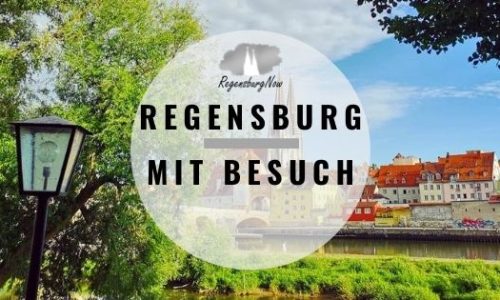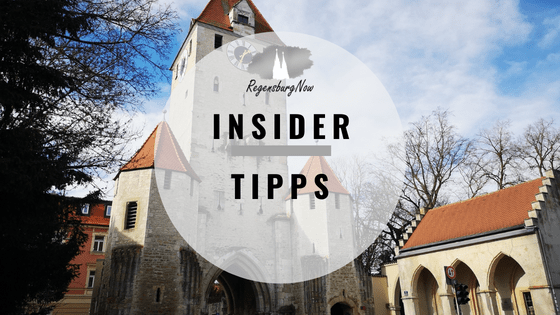
Insider tips Regensburg
OUR INSIDER SIGHTSEEING TIPS FOR REGENSBURG!
Have you already seen everything in Regensburg or shown your visitor all the highlights? Then now it’s time for the finer details, the little things, the insider tips. Even in Regensburg there are still hidden corners, lesser-known areas that are off the beaten track. We have picked out nine unusual things and places in and around Regensburg for you.
9 Regensburg insider tips that not everyone knows about:
Discover small monuments
Regensburg is home to a large number of small sculptures and stone figures. For example, we really like the young man in Neue Waaggasse No. 1 at the so-called Gumprecht’sche Haus.
If you stand at the green door and look up to the left, you will discover him: he is cheekily showing his backside. Incidentally, the Gumprecht’sche Haus was first mentioned in 1052.

A few meters further on, at the Witt music store on Haidplatz, you will find the little city mouse sitting on the corner window of the patrician castle “Neue Waag”. Incidentally, it does not date back to the Middle Ages, but was placed there during a renovation after the Second World War. The stone relief is also a replica. The original from the 1950s disappeared in private rooms during renovations in the 1990s. Petting the little mouse is said to bring good luck, or at least you will never be as poor as a church mouse.

Red heart patch
The address “Roter Herzfleck” consists of just one house. You can see the red building as soon as you stand in front of the Old Town Hall and look through the passageway.
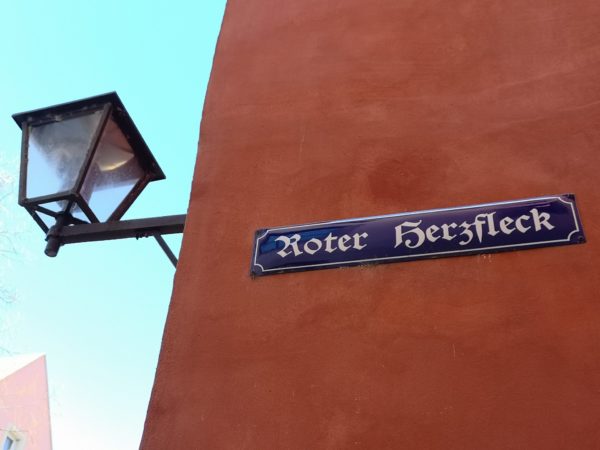
The street name comes – like so many in Regensburg – from an inn. The inn “Zum Roten Herzen” was also a brothel for a time. It is said that the proximity of the brothel to the Old Town Hall and the aldermen was no coincidence…
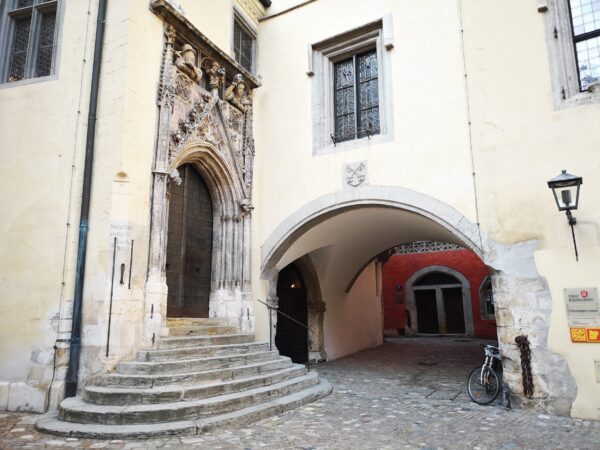
Unraveling signs
You can see strange, colorful signs everywhere in Regensburg. There are a few of them at Haidplatz. But what do they mean? The signs are part of the art project “Stadtzeit – Zeitstadt”, which was realized in 1995 by the painter and graphic artist Maria Maier to mark the 750th anniversary of the freedom of the city of Regensburg. The signs depict the layout of selected buildings and places in the form of pictograms. A total of 76 panels can be found in the city center, covering the following ten topics: Churches, patrician houses, palaces, gates, museums, new buildings, squares, parks and the Old and New Town Halls. The park plaques, for example, are green and red and show Herzogspark, Fürst-Anselm-Allee, Villapark, Ostenallee, Schlosspark, Dörnbergpark, Stadtpark, Bahnhofs-Anlagen and Prebrunnallee.
We have already reported on this in detail here: to the article.
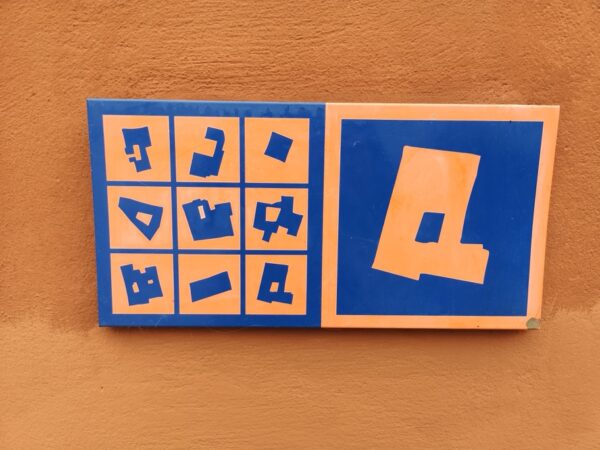
The Center for Short Art
There are several galleries in Regensburg. In Ostengasse, next to the Backteufel bakery, there is a very, very small gallery, more like a shop window: the Center for Short Art zfkk. Three women from Regensburg had the idea of exhibiting small, changing art projects here. Take a look.

Mushroom kiosk
At the beginning of Fürst-Anselm-Allee is a kiosk in the shape of a toadstool: “Das Schwammerl”. This curious kiosk is cult in Regensburg and is a listed building. In the 1950s, the so-called “milk mushrooms” emerged in southern Germany. The eye-catching kiosks with a recognition effect were intended to increase milk sales. As alcohol was only permitted from the age of 21, milk bars were very popular. If you ask older Regensburgers about the Milchpilz, you will quickly be told a story about delicious cream in a waffle, for example, or about chocolate milk and the love of one’s youth. The first kiosk was set up in Bayreuth in 1952. Today, there are still eight mushroom kiosks in operation. One of them is here in Regensburg.
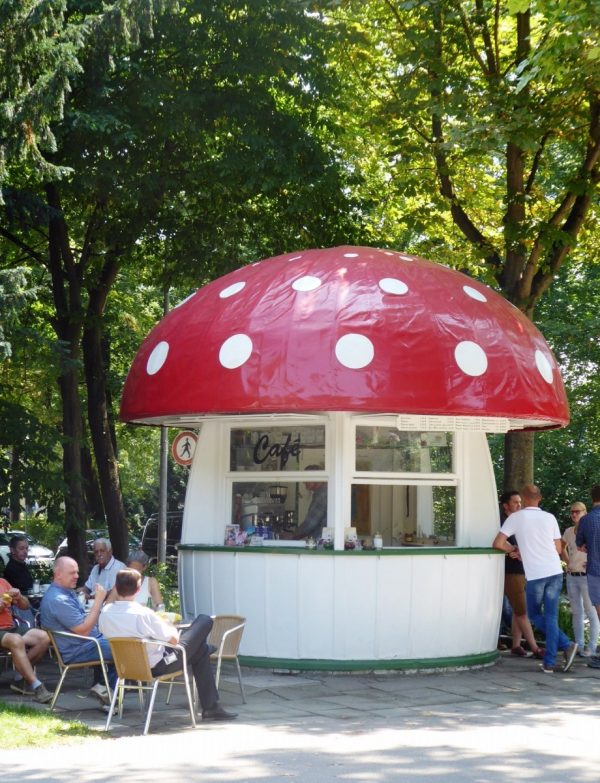
Maria Läng Chapel
Right next to the cathedral, in Pfauengasse 2, is the easily overlooked 30m² baroque Maria Läng Chapel. First of all: there are always worshippers praying here, which is why you should only take a quick look inside and not disturb them. The Maria Läng Chapel was the house chapel of the former canons’ court. It was consecrated in honor of “Christ at Emmaus” on 14 August 1678. Inside there is an altar with a life-size image of the beautiful Virgin Mary. It is said that Mary is asked for help when something could be “short” but you would rather have it “long”, such as love or financial blessings. Conversely, there are of course also intercessions when a prolonged misfortune is to end.
Discover signs
If you look up from time to time as you wander around Regensburg, you can discover the many beautiful signs in the city. These signs often belonged to former inns, such as the sign with the lily in Blaue Liliengasse. The “Zur Blauen Lilie” inn (no. 4) used to be located here.
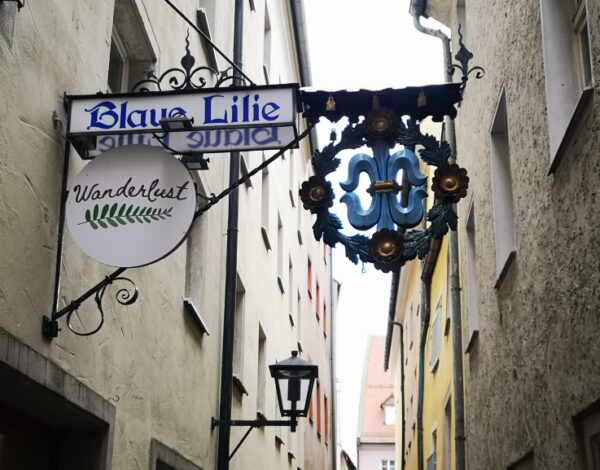
One of our favorite signs can be seen on the house at Unter den Schwibbögen 21: Jonah and the whale. The “Zum Walfisch” inn was here as early as the 16th century. Unfortunately, the original inn sign suddenly disappeared in 2016. Now a reconstruction can be seen there. The inn sign shows the whale spitting Jonah ashore.
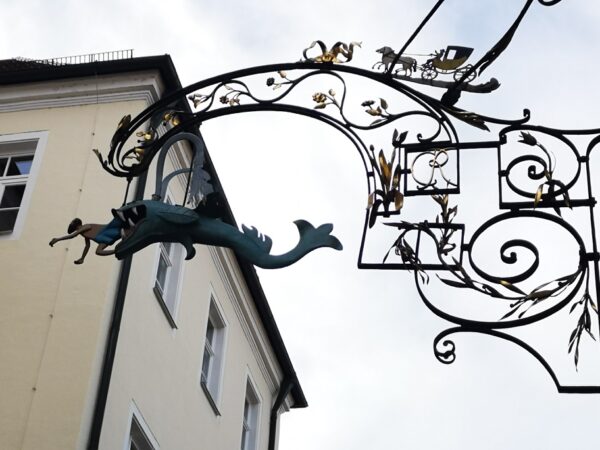
Another example can be found at Ostengasse 16: despite having food in its paw, the chained bear at Brandl Bräu looks rather sad.
There is a plaque on the building with the story behind it:
“One day, the wagon of a traveling circus, which included a dancing bear, rumbled through Regensburg’s Ostentor. The showman and his animals took up residence in an inn on Ostengasse in Regensburg. The bear was kept in the stable in the courtyard of the inn, which two calves had to vacate. During the night, a thief broke into this stable and grabbed one of the calves in the dark. In doing so, he came across the bear, who had been disturbed in his sleep. Before the terrified thief could make his escape, he was slapped in the face by a clawed paw and a shaggy body blocked his escape route. In utter despair, the intruder screamed for help, believing he had fallen into the hands of the devil himself. The innkeeper and servants hurried over with lights and succeeded in freeing the wailing man from the bear’s grasp. The next day, the bear was the talk of Regensburg in the courtyard of the inn. The people of Regensburg flocked to the Ostengasse in droves. The landlord, whose beer sales had increased considerably, bought the animal and released it from its wandering life. Since then, the good bear was kept like a faithful dog and could move freely on its long chain. Since that time, the inn on Ostengasse has also been called “Zum Bären an der Kette”.”
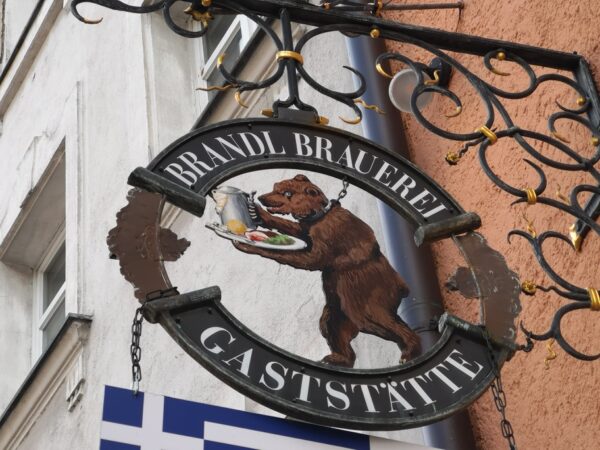
Roof terrace Galerie Kaufhof
An unexpected view of Regensburg opens up when you visit the large roof terrace of the Dinea restaurant on the fourth floor of Galerie Kaufhof on Neupfarrplatz. The cathedral and Neupfarrkirche church are almost close enough to touch and the view stretches as far as the Winzerer Heights. This is a great place to linger and enjoy the view.
Trinity Mountain
If you are looking for a little break close to the city center, we recommend a visit to the Dreifaltigkeitsberg. From the city, walk from Stadtamhof over the Protzenweiherbrücke bridge, then straight ahead into Drehergasse and finally left up the Osterbergweg. The Osterbergweg is a Way of the Cross that leads to the Holy Trinity Church.
The Holy Trinity Church was built as a church of thanksgiving at the end of the plague epidemic in 1713 and completed in 1715. From here you have a magnificent view over Regensburg.
The Max Schultze Trail
The Max-Schultze-Steig is a 12-hectare nature reserve that belongs to the city of Regensburg and the district and begins behind Prüfeningen Castle. The namesake Max Schultze, architect and princely Thurn und Taxis chief architect, acquired some land here in 1906. A year earlier, limestone deposits had begun to be quarried here. As Max Schultze was also a conservationist, he tried to save this area from further quarrying. In 1912, he donated the site to the city of Regensburg on the condition that it always be left in its natural state. The city fulfilled this wish: in 1921, the area was declared a nature reserve.
The hiking trail starts at Prüfeningen Castle: walk along the castle into Erminoldweg and then follow the red rectangle or the Danube Panorama Trail. Please note: this is a steep path, so you need to be absolutely sure-footed.
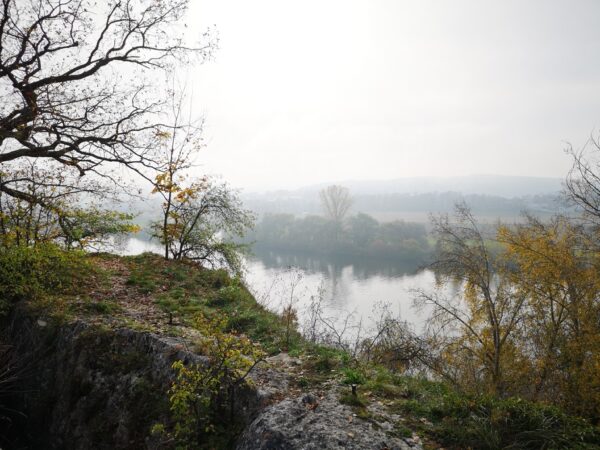
Have fun discovering!

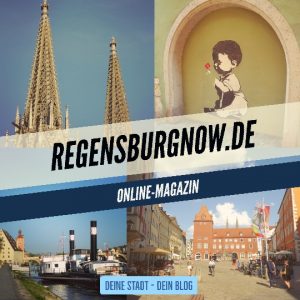
(unpaid advertising due to naming and shaming)
Our excursion tips on Facebook:
Do you already know our Facebook group “Excursion tips in and around Regensburg plus Upper Palatinate” with more than 22,000 members? Click here for the group.
RegensburgNow.de has over 40,000 readers per month and is a site of the RegensburgNow agency
If you are interested in advertising on RegensburgNow, please write to us at mail@regensburgnow.de
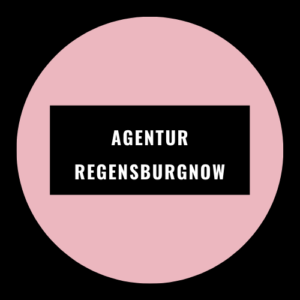
Don’t miss a thing! Subscribe to our newsletter:
Want more tips? Then please click here:








